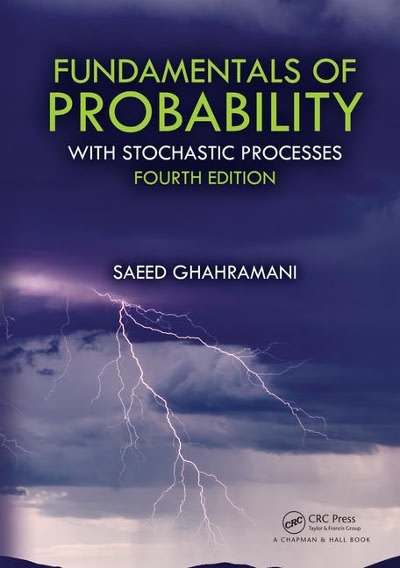18. A fair die is tossed repeatedly. We begin studying the outcomes after the first 6 occurs....
Question:
18. A fair die is tossed repeatedly. We begin studying the outcomes after the first 6 occurs.
Let the first 6 be called the zeroth outcome, let the first outcome after the first six, whatever it is, be called the first outcome, and so forth. For n ≥ 1, define Xn = i if the last 6 before the nth outcome occurred i tosses ago. Thus, for example, if the first 7 outcomes after the first 6 are 1, 4, 6, 5, 3, 1, and 6, then X1 = 1, X2 = 2, X3 = 0, X4 = 1, X5 = 2, X6 = 3, and X7 = 0. Show that {Xn : n = 1, 2, . . .} is a Markov chain, and find its transition probability matrix. Furthermore, show that
{Xn : n = 1, 2, . . .} is an irreducible, positive recurrent, aperiodic Markov chain. For i ≥ 1, find πi, the long-run probability that the last 6 occurred i tosses ago.
Step by Step Answer:

Fundamentals Of Probability With Stochastic Processes
ISBN: 9780429856273
4th Edition
Authors: Saeed Ghahramani






